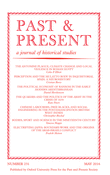-
Views
-
Cite
Cite
Daniel Hershenzon, The Political Economy of Ransom in the Early Modern Mediterranean , Past & Present, Volume 231, Issue 1, May 2016, Pages 61–95, https://doi.org/10.1093/pastj/gtw007
Close - Share Icon Share
Extract
In 1608, Christian corsairs captured a ten-year-old Algerian girl named Fatima and sold her into slavery in Livorno, Italy. Her father paid her ransom and nearly succeeded in returning her to Algiers. But the ship that was intended to carry her to freedom stopped in Corsica, where she was forced to convert to Christianity and baptized as Madalena. She never returned home, despite more than a decade of diplomatic effort involving the Spanish king and nobles, Jewish subjects of Spanish Oran, Algerian pashas and janissaries and the Ottoman sultan. Fatima’s travails were far from unique. In the early modern Mediterranean, a wide range of individuals, networks and institutions dealt with the trafficking of people — capturing, enslaving, smuggling and ransoming — across and beyond the borders of Spain’s Mediterranean territories, Morocco, and Ottoman Algiers and Tunis. According to a recent estimate, at least three million people — Muslims and Christians — lost their liberty at sea or on land and were enslaved between 1450 and 1850. 1 Out of this number, few managed to obtain release through compensation, swapping of captives or flight. 2 As Fatima’s narrative makes clear, this was not for lack of trying. Her story reveals a complex and integrated political economy that deeply preoccupied commercial, political and religious actors. Rulers and captives, ransom dealers and institutions together became the chief actors in a Mediterranean political economy of ransom stimulated by violence, privateering and piracy. 3




